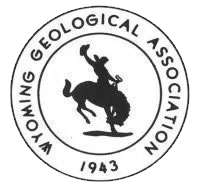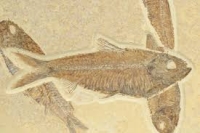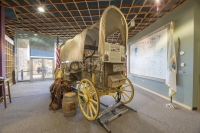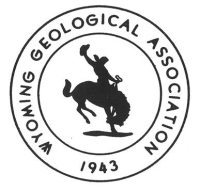Membership
Join or renew your WGA Membership
WGA Bookstore
Find WGA Geology Publications
Mud Log Library
6000+ Mud Logs Available!
Wyoming Geological Association

Abstract
A sixth Underground Injection Control well class was created by the USEPA in 2010 for CO2 injection. The Inflation Reduction Act of 2022 (IRA) that expanded the Section 45Q tax credit is spurring the first wave of commercial Carbon Capture, Utilization, and Storage projects. These tax credits have allowed CCUS to build upon and start evolving from the academic/research phase. CCUS is a new repurposing of preexisting skills, processes, and technologies, many of which have been around for decades. Skill sets built in finance, energy, legal, land, engineering, geology, environmental, and academia are necessary to execute a successful project. This presentation will focus on Class VI permitting requirements for site characterization, modeling, and long-term monitoring including analyses of cores, logs, geochemistry, geomechanics, and geophysics.
Bio
Julia Zohner is a Class VI technical geologist supporting permitting of regional sequestration hubs, the Geology Director of Operations for a project team executing two Class VI projects at ethanol plants, and is a regulatory and geologic consultant. Her undergraduate education was in Environmental Studies focusing on technical skills and socio-environmental issues. Julia started working in the energy sector at the Wyoming Oil and Gas Conservation Commission and was involved in the regulatory transition from traditional and coal bed methane wells to horizontal drilling. She has undertaken additional undergraduate and graduate coursework to become a licensed geologist. For the last 15 years she has been providing policy, regulatory and technical guidance and deliverables for clients in the energy sector. Julia’s specialty is permitting with a focus on disposal and injection wells, which translated to working in carbon sequestration. She lives with her husband, Jake, their daughter, and macaw in Casper.
| Event Date | 04-11-2025 11:15 am |
| Event End Date | 04-11-2025 1:15 pm |
| Capacity | 40 |
| Individual Price | $25.00 |
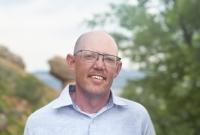

Austin Burgess with the Central Wyoming Trails Alliance is putting together plans for rebuilding and repairing the Cottonwood Creek Dinosaur Trail out at Lake Alcova. He is interested in speaking and providing information about the project, and any input he might get from local geologists and paleontologists.
Lunch cost:
WGA and SPE Members: $25
WGA and SPE Non-Member: $30
WGA Student Member: $10
You may learn more about the Central Wyoming Trails Alliance here:
| Event Date | 04-25-2025 11:15 am |
| Event End Date | 04-25-2025 1:00 pm |
| Capacity | Unlimited |
| Individual Price | SPE & WGA Members $25, Non-Members $30, Students $10 |

The Science Zone, located at 222 E. Collins in Casper, will be hosting a free family STEAM night focused on nuclear energy. Please contact The Science Zone Director Steven Schnell at 307.473.9663 for further information or if you have questions.
| Event Date | 05-08-2025 4:00 pm |
| Event End Date | 05-08-2025 6:00 pm |
| Capacity | Unlimited |
| Individual Price | No Charge |
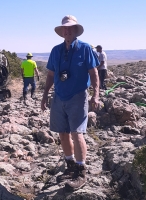
SALT CREEK FIELD REVISITED
Abstract
Mark Milliken
WGA, May 9, 2025
Salt Creek Field is located about 40 miles north of Casper, WY. It is currently under CO2 tertiary recovery operations by Contango Resources LLC, whose field office is in Midwest, Wyoming. WOGCC production in 2024 was 3 MMBO and 36 MMBW. Cumulative WOGCC production is 744 MMBO.
Salt Creek is the largest of several asymmetrical Laramide-aged oil-bearing structures aligned along a blind reverse fault system extending roughly 62 miles southeast to the Big Muddy uplift near Glenrock in the Powder River Basin
Salt Creek represented several firsts in U.S. oil filed history. It was once one of the largest fields in the U.S. if the not the world. It was one of the first U.S. fields to be unitized and electrified.
With nearby discoveries in the late 1880s, Salt Creek quickly expanded. Soon it was served by a railroad, a “super highway,” and several pipelines and refineries. Several reservoirs have produced, but most production then (as now) came from the 1st and 2nd Wall Creek Sandstones of the Frontier Formation. Unitized operations began in 1936 with Midwest Oil Company as operator.
In 1924, there were 200 labor camps and towns housing 59,000 people. Midwest camp was the largest at 17,000 population. Daily oil production was about 132 MBOPD. The field could have produced more, if not for the limited capacities of pipelines and refineries. Refined Salt Creek gasoline was being shipped to Europe by ocean tankers.
The field went into decline during the depression and World War II. Waterflooding began in the mid-1950s, offering a glimmer of hope. After building a CO2 pipeline from Baroil, WY, Anadarko Petroleum restored Salt Creek’s fortunes with a significant tertiary recovery project in 2004. Despite the engineering challenges of a 117-year oil field, and geological challenges of unpredictably discontinuous reservoirs, Contango continues to carry on the operations and history of Salt Creek Field.
Bio:
| Event Date | 05-09-2025 11:15 am |
| Event End Date | 05-09-2025 1:00 pm |
| Capacity | Unlimited |
| Individual Price | SPE & WGA Members $25, Non-Members $30, Students $10 |
Find Out What's Happening at WGA
View current and archived issues of "Contact" the Wyoming Geological Association Newsletter.
WGA Sponsors
Thanks to all our valuable WGA Sponsors! Are you interested in advertising with WGA. Learn how.
Website Design by Waves Web Design.
